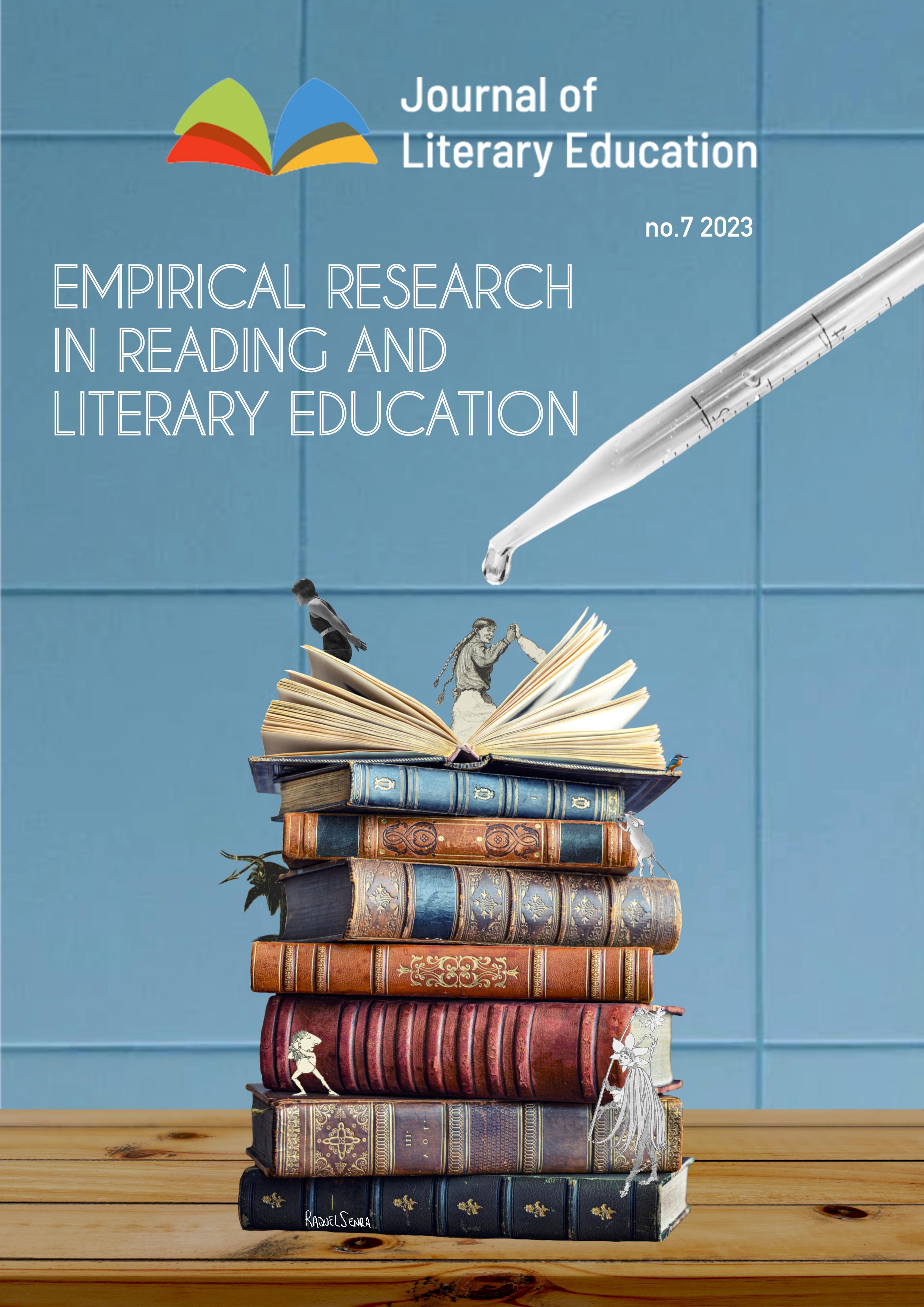“The students expect to read non-fiction, so that’s what they’re set on”. Tensions between students’ and teachers’ views on reading, including educational perspectives
DOI:
https://doi.org/10.7203/JLE.7.27332 Abstract
Abstract
Abstract
Τhis article aims to investigate how students' responses to reading and talking about a fictional novel relate to teachers' ideas about the possibilities of a literary work. A large group (413) of readers aged 10–12 completed questionnaires both before and after reading the Romani author Katarina Taikon's Katitzi (1969/2015), which, in a fast-paced and engaging way touches upon subjects such as vulnerability and racism. Responses from 14 teachers are analysed in relation to these students’ answers. The results show great student engagement, with a clear majority (76%) formulating thoughts about Katitzi's situation and their contemporaries. The teachers, on the other hand, highlight problems they see with the literary work and tend to value reading non-fiction more. Through the discrepancy, the question arises as to whether the students' engagement after reading could be utilised more, so that they develop both as readers and participants in a current social debate.
Keywords: teaching literature, children's and youth literature, book talks, Swedish in primary school
Resumen
Este artículo tiene como objetivo investigar cómo las respuestas de los y las estudiantes al leer y hablar sobre una novela de ficción se relacionan con las ideas de los profesores sobre las posibilidades de una obra literaria. Un gran grupo (413) de lectores de 10 a 12 años completó cuestionarios antes y después de leer Katitzi (1969/2015), de la autora romaní Katarina Taikon, que, de manera rápida y atractiva, aborda temas como la vulnerabilidad y el racismo. Se analizan las respuestas de 14 miembros del profesorado en relación con las respuestas del alumnado. Los resultados muestran un gran compromiso por parte de los y las estudiantes, con una clara mayoría (76%) expresando pensamientos sobre la situación de Katitzi y sus contemporáneos. Por otro lado, el profesorado resalta problemas que percibe en la obra literaria y tiende a valorar más la lectura de no ficción. A través de esta discrepancia, surge la pregunta de si la motivación del alumnado después de la lectura podría ser utilizado de manera más efectiva, para que se desarrollen tanto como lectores como participantes en un debate social actual.
Palabras clave: enseñanza de literatura, literatura infantil y juvenil, charlas sobre libros, sueco en la escuela primaria.
Resum
Aquest article té com a objectiu investigar com les respostes de l’estudiantat en llegir i parlar sobre una novel·la de ficció es relacionen amb les idees del professorat sobre les possibilitats d'una obra literària. Un grup ampli (413) de lectors de 10 a 12 anys va completar qüestionaris abans i després de llegir Katitzi (1969/2015), de l'autora romaní Katarina Taikon, que, d'una manera ràpida i atractiva, aborda temes com la vulnerabilitat i el racisme. Les respostes de 14 membres del professorat s’analitzen en relació amb les respostes d'aquests i aquestes estudiants. Els resultats mostren un gran compromís de l’alumnat, amb una clara majoria (76%) formulant pensaments sobre la situació de Katitzi i els seus contemporanis. El professorat, d'altra banda, destaca problemes que veu en l'obra literària i tendeix a valorar més la lectura de no ficció. A través de la discrepància, sorgeix la pregunta de si la implicació dels i les estudiants després de la lectura podria ser utilitzada més, de manera que es desenvolupen tant com a lectors com a participants en un debat social actual.
Paraules clau: ensenyament de literatura, literatura infantil i juvenil, xerrades de llibres, suec a l'escola primària.
 Downloads
Downloads
Downloads
Published
-
Abstract340
-
PDF191
Issue
Section
License
![]()
This work is licensed under a Creative Commons Attribution-NonCommercial-NoDerivatives 4.0 International License.
Authors who publish with this journal agree to the following terms: Authors retain copyright and grant the journal right of first publication with the work simultaneously licensed under a Creative Commons Attribution License that allows others to share the work with an acknowledgement of the work's authorship and initial publication in this journal. Authors are able to enter into separate, additional contractual arrangements for the non-exclusive distribution of the journal's published version of the work (e.g., post it to an institutional repository or publish it in a book), with an acknowledgement of its initial publication in this journal. Authors are permitted and encouraged to post their work online (e.g., in institutional repositories or on their website) prior to and during the submission process, as it can lead to productive exchanges, as well as earlier and greater citation of published work (See The Effect of Open Access).



